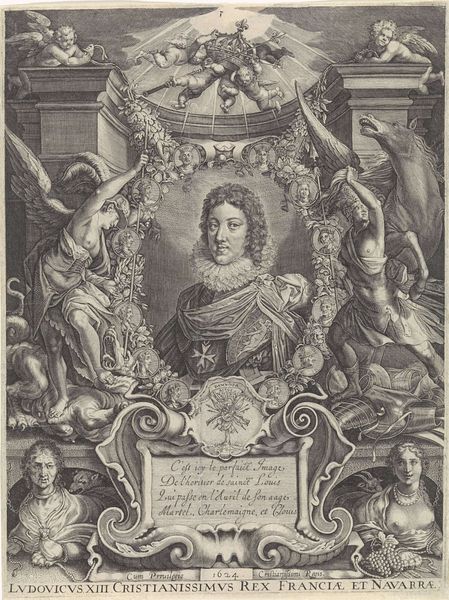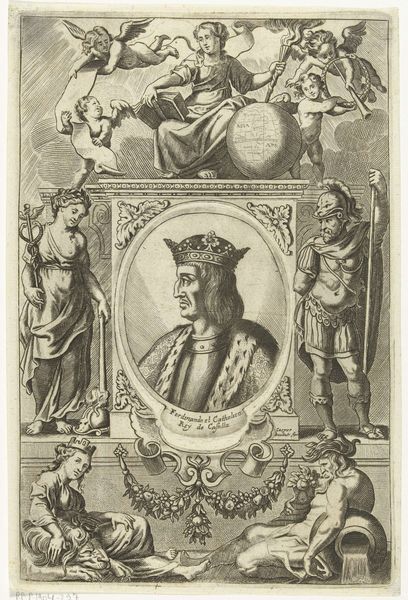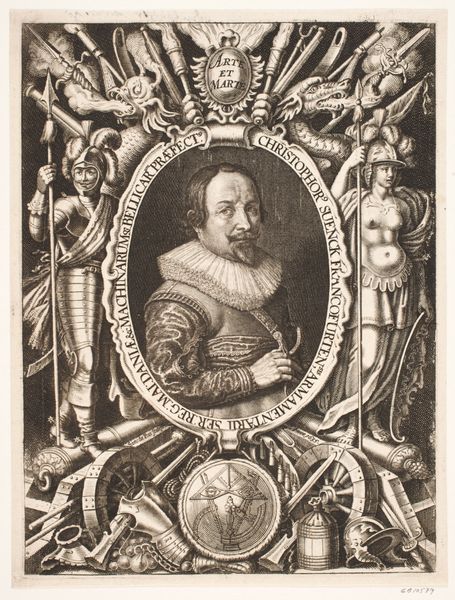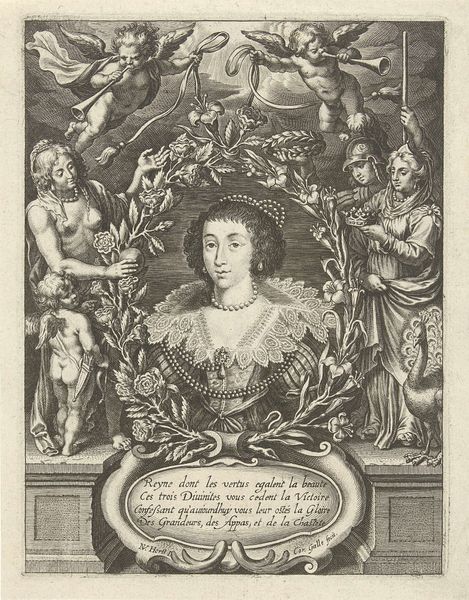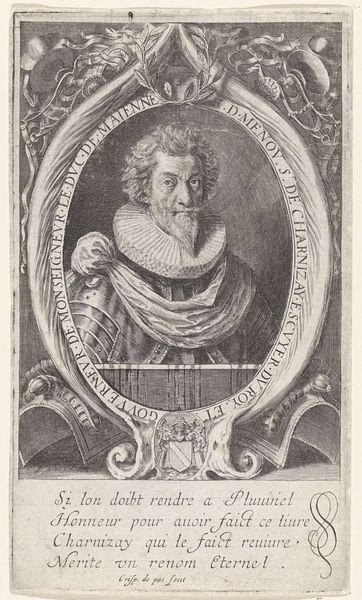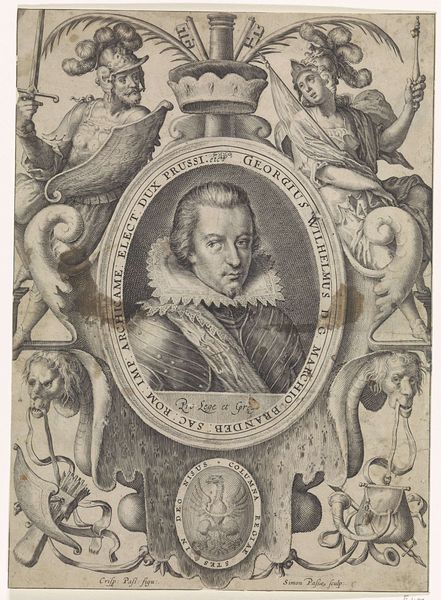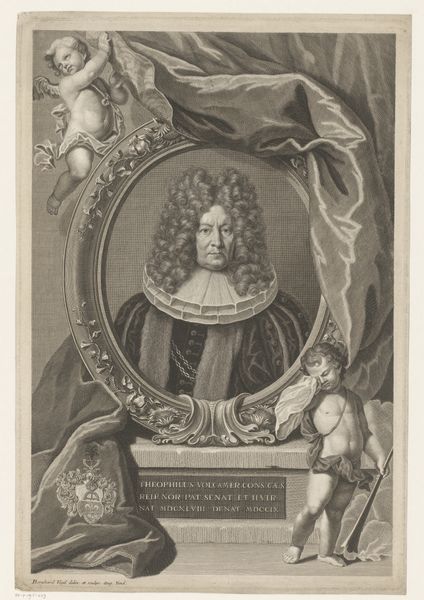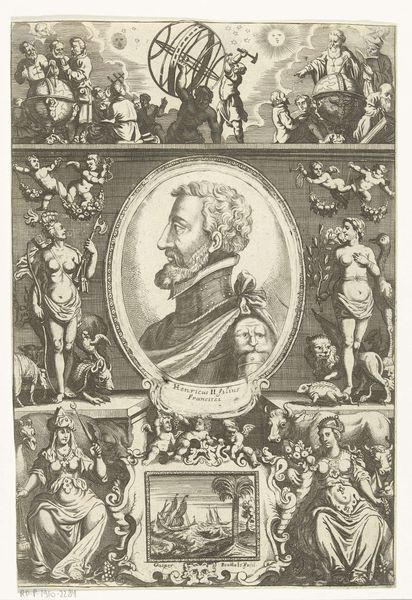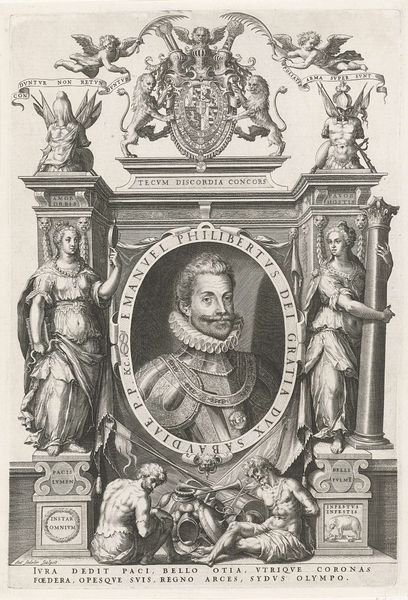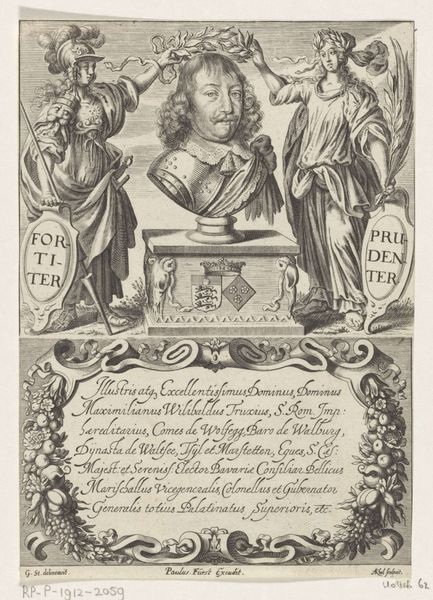
engraving
#
portrait
#
allegory
#
baroque
#
old engraving style
#
line
#
engraving
Dimensions: height 257 mm, width 205 mm
Copyright: Rijks Museum: Open Domain
This is Crispijn van de Passe the Younger's portrait of Roger de Saint-Lary de Bellegarde, made sometime in the 17th century, engraved on paper. De Bellegarde, a nobleman, was Grand Esquire of France. Consider the visual language being employed. Crispijn uses the visual rhetoric of power that was essential to aristocratic portraiture in the early modern period. De Bellegarde is framed by allegorical figures, eagles, and weapons, each symbol carefully chosen to communicate status and power. The composition and ornamentation speak to the cultural values of the French aristocracy. Notice the inscription at the bottom that reads "Grand Bellegarde, ce tableau...Mais de figurer son merite/Ce n'est pas l'oeuvre d'un pinceau,” meaning, “It is not the work of a brush, but to depict his merit." The inscription suggests that the true measure of a person like de Bellegarde cannot be captured by mere artistry, but through an acknowledgement of his inherent status. How does it feel to be outside this elite sphere? How do we come to terms with historical representations of power and privilege?
Comments
No comments
Be the first to comment and join the conversation on the ultimate creative platform.
